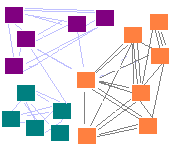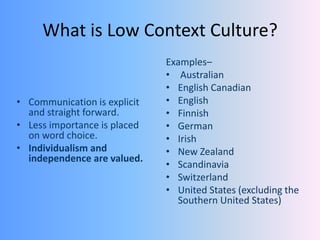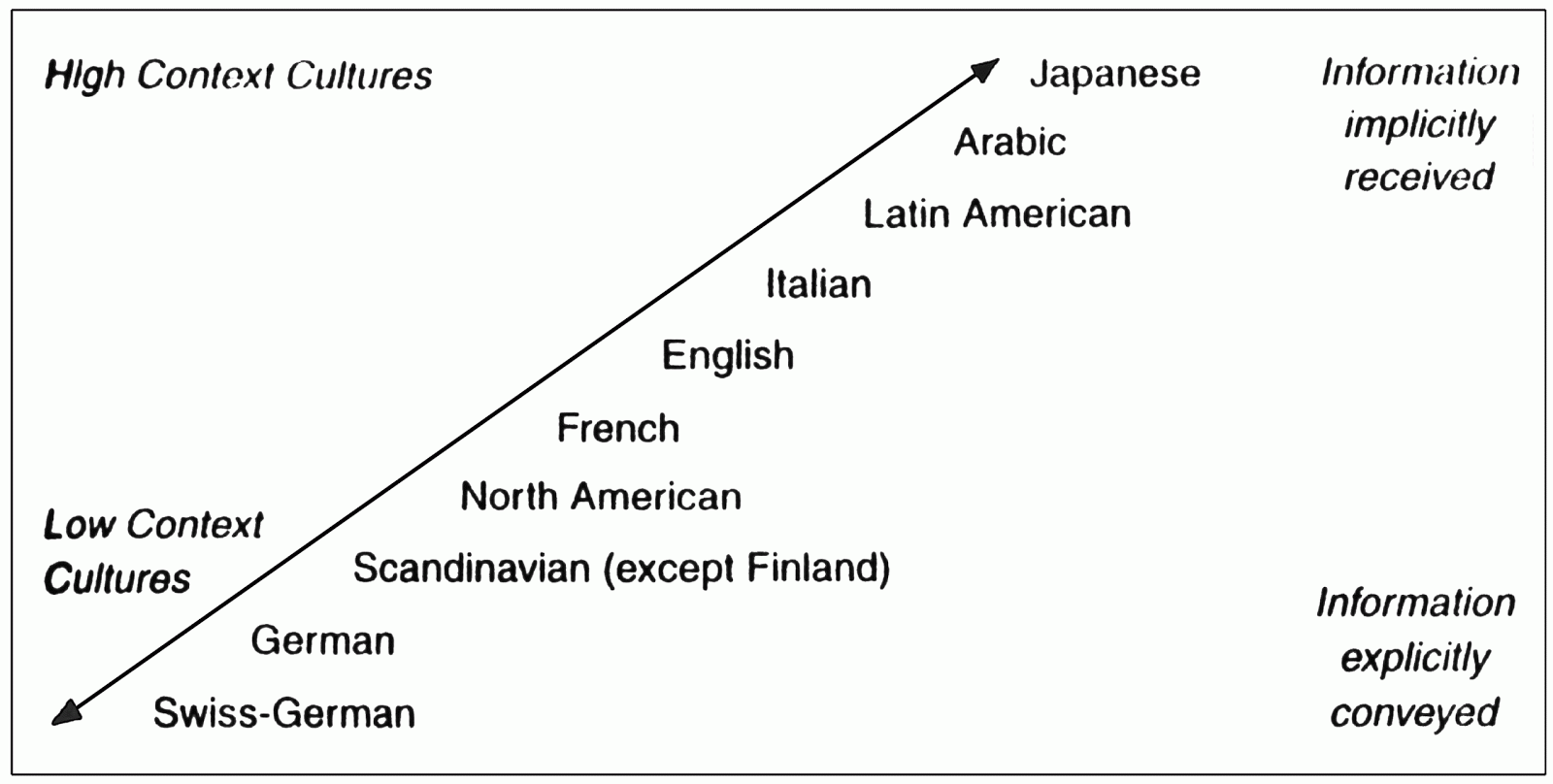High context versus low context cultures are terms used to describe the way in which people communicate and interpret information in different cultural groups. The concept of high and low context was first introduced by anthropologist Edward T. Hall in 1976, and it refers to the degree to which culture influences the way in which people communicate and understand information.
High context cultures are those in which the context of the communication, such as the relationships between the people involved, the shared history, and the cultural norms and values, are more important than the words themselves in understanding the message. In high context cultures, people rely on nonverbal cues, such as body language and facial expressions, as well as their shared history and cultural norms, to understand the meaning of a message.
Low context cultures, on the other hand, are those in which the words and explicit meaning of the message are more important than the context in which it is delivered. In low context cultures, people rely more on the explicit meaning of the words and the message itself to understand its meaning, rather than relying on nonverbal cues or shared cultural knowledge.
One of the main differences between high and low context cultures is the way in which they communicate. In high context cultures, communication is often more indirect and subtle, relying on nonverbal cues and shared cultural knowledge to convey meaning. In low context cultures, communication is often more direct and explicit, relying on the words themselves to convey the message.
Another difference between high and low context cultures is the way in which they interpret information. In high context cultures, people are more likely to interpret information based on the context in which it is presented, taking into account the relationships between the people involved, shared cultural norms and values, and other contextual factors. In low context cultures, people are more likely to interpret information based solely on the words and explicit meaning of the message.
High and low context cultures can also differ in the way in which they perceive time. In high context cultures, time is often seen as more flexible and open-ended, with a greater emphasis on building relationships and social connections. In low context cultures, time is often seen as more structured and linear, with a greater emphasis on efficiency and productivity.
Overall, high and low context cultures represent different ways of communicating and interpreting information. Understanding these differences can be useful for businesses and organizations operating in a global context, as it can help them better understand and communicate with people from different cultural backgrounds.
